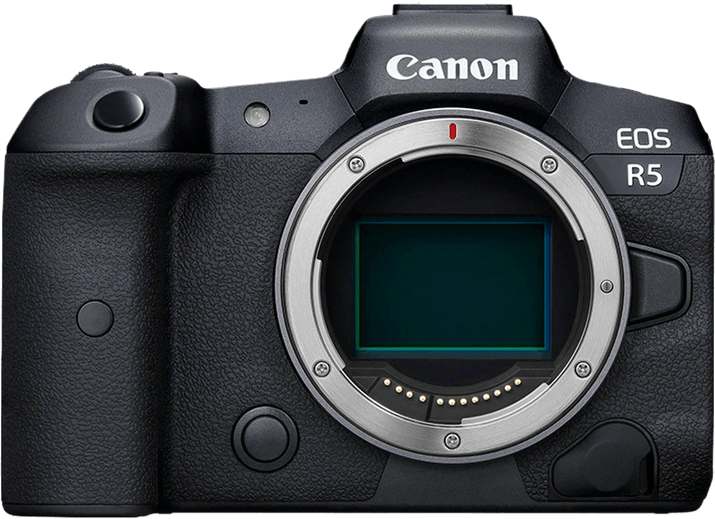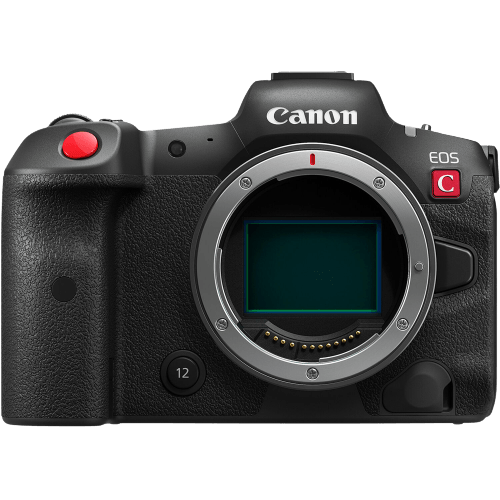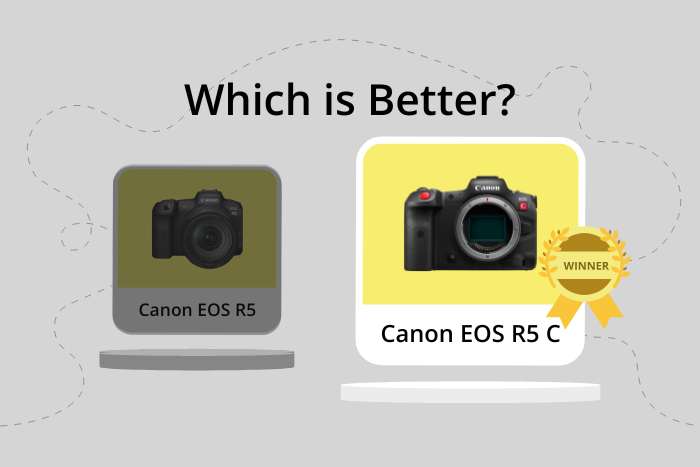Canon EOS R5 vs EOS R5 C Comparison
Canon EOS R5

Canon EOS R5 C

The Canon EOS R5 C takes the lead with a score of 87/100, slightly ahead of the Canon EOS R5 at 86/100. Both cameras are mirrorless and share the same launch price of $4499. They also have similar dimensions, with the EOS R5 C being slightly larger at 142 x 101 x 111mm and heavier at 770g compared to the EOS R5’s 138 x 98 x 88mm and 680g.
The EOS R5 C’s advantage lies in its newer release date, hitting the market in 2022, while the EOS R5 was released in 2020. This gives the R5 C the benefit of updated technology and potentially improved performance.
On the other hand, the EOS R5 has the edge when it comes to size and weight, making it a more portable option for photographers on the go. However, this difference is minimal and may not significantly impact the user experience.
Taking these factors into account, the Canon EOS R5 C holds a slight edge over the EOS R5, but both cameras offer strong performance and value for their price. The choice between the two ultimately depends on the individual’s preferences and priorities.
Canon EOS R5 vs EOS R5 C Overview and Optics
The Canon EOS R5 and Canon EOS R5 C both receive an optics score of 88/100, indicating that these cameras have comparable optical performance. They share several key specifications, such as a 45-megapixel CMOS sensor, 20 fps shooting speed, Digic X processor, full-frame sensor size, Canon RF lens mount, and image stabilization. Both cameras have impressive sensor scores, with the R5 scoring 95 and the R5 C scoring 97 in the DXOMARK tests.
The Canon EOS R5 C has a slight edge over the R5 due to its higher DXOMARK sensor score of 97, which means it provides better image quality and low-light performance. This advantage makes the R5 C more suitable for professional photographers who require top-notch image quality in various lighting conditions.
On the other hand, the Canon EOS R5, while having a slightly lower DXOMARK sensor score of 95, still offers excellent image quality and performance. This makes it a suitable choice for photographers who value high-quality output but do not necessarily need the absolute best performance in low-light situations.
Both cameras excel in their optical capabilities, making them strong contenders in the market. The Canon EOS R5 C stands out for its superior low-light performance, providing an advantage for those who require the highest image quality possible. The Canon EOS R5, while not quite as strong in this area, remains a reliable and high-performing option for photographers who prioritize excellent image quality. Ultimately, the choice between these two cameras will depend on individual needs and preferences, as both offer impressive optical performance.
Canon EOS R5 vs EOS R5 C Video Performance
The Canon EOS R5 and the Canon EOS R5 C both have a video score of 100/100, indicating their exceptional video capabilities. These cameras share several specifications, including 8K max video resolution, 8192 x 4320 max video dimensions, 120fps max video frame rate, and built-in time-lapse functionality.
The Canon EOS R5 excels in its video capabilities due to its high-resolution 8K video, allowing for detailed and sharp footage. The 120fps max video frame rate provides smooth slow-motion shots, and the built-in time-lapse functionality offers creative possibilities for capturing the passage of time. The Canon EOS R5 is an excellent choice for videographers who prioritize high-quality video and versatile features.
The Canon EOS R5 C also boasts impressive video specifications. Like the R5, it has 8K max video resolution, ensuring crisp and clear visuals. Additionally, the 120fps max video frame rate enables smooth slow-motion capture, and its built-in time-lapse functionality enables users to create captivating time-lapse videos. The R5 C is an equally strong option for those seeking a camera with outstanding video capabilities.
Both the Canon EOS R5 and the Canon EOS R5 C are exceptional choices for videographers who require top-notch video performance. Their shared specifications, such as 8K resolution, 120fps frame rate, and built-in time-lapse make them equally suitable for capturing stunning visuals. Ultimately, the decision between these two cameras comes down to individual preferences and other factors, as their video capabilities are on par with each other.
Canon EOS R5 vs EOS R5 C Features and Benefits
The Canon EOS R5 and Canon EOS R5 C both have a feature score of 87/100, making them equal in terms of their features. They share several common specifications, such as a 3.2-inch screen size, 2,100,000-dot screen resolution, touchscreen capabilities, flip screen, and connectivity options like GPS, WIFI, and Bluetooth.
The Canon EOS R5 stands out in certain aspects. However, since the feature scores are identical, it means that both cameras have the same advantages and do not surpass each other in any particular area. The same applies to the Canon EOS R5 C, as it does not have any additional features that make it better than the Canon EOS R5.
In terms of features, there is no clear winner between the Canon EOS R5 and Canon EOS R5 C. Both cameras provide the same level of functionality and user experience, making them equally suitable for various photography and video needs. The decision between these two cameras would likely come down to other factors such as price, availability, or personal preference, rather than any differences in their features.
Since both cameras have the same feature score and specifications, potential buyers can confidently choose either model based on their individual needs and preferences, knowing that they will receive a high-quality camera with impressive features.
Canon EOS R5 vs EOS R5 C Storage and Battery
The Canon EOS R5 and Canon EOS R5 C have identical storage and battery scores, both receiving 68/100. They share common specifications, including two memory card slots, compatibility with SD/SDHC/SDXC (UHS-II) and CFexpress cards, and a battery life of 320 shots. Both cameras use the LP-E6NH battery type and offer USB charging capabilities.
The Canon EOS R5 excels in its UHS-II compatibility for SD cards, allowing for faster read and write speeds. However, the Canon EOS R5 C slightly surpasses it with CFexpress B card compatibility, providing even higher read and write speeds for professional use.
Despite these minor differences, both cameras demonstrate strong storage and battery performance, meeting the needs of various users. Considering their equal scores and similar specifications, photographers and videographers can confidently choose either camera based on their specific requirements and preferences.
Canon EOS R5 vs EOS R5 C Alternatives
Still not sure which camera is right for you? We have a recent article explaining Canon camera names and types which could be useful. These trending camera comparisons may inspire you:

